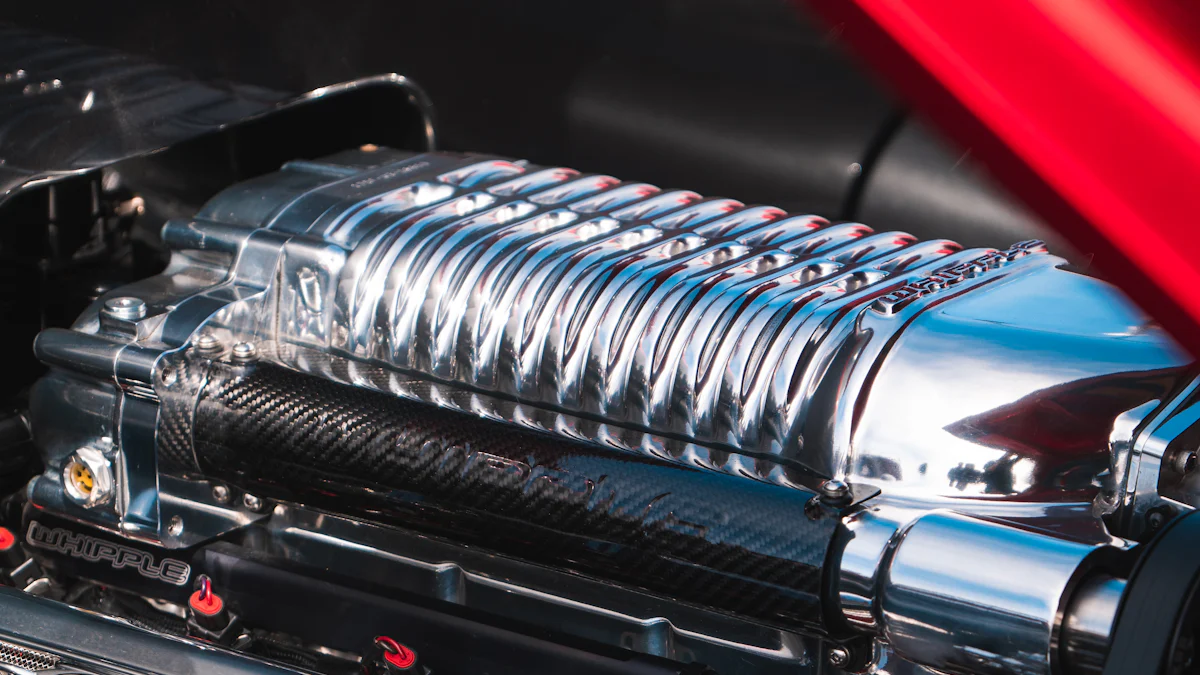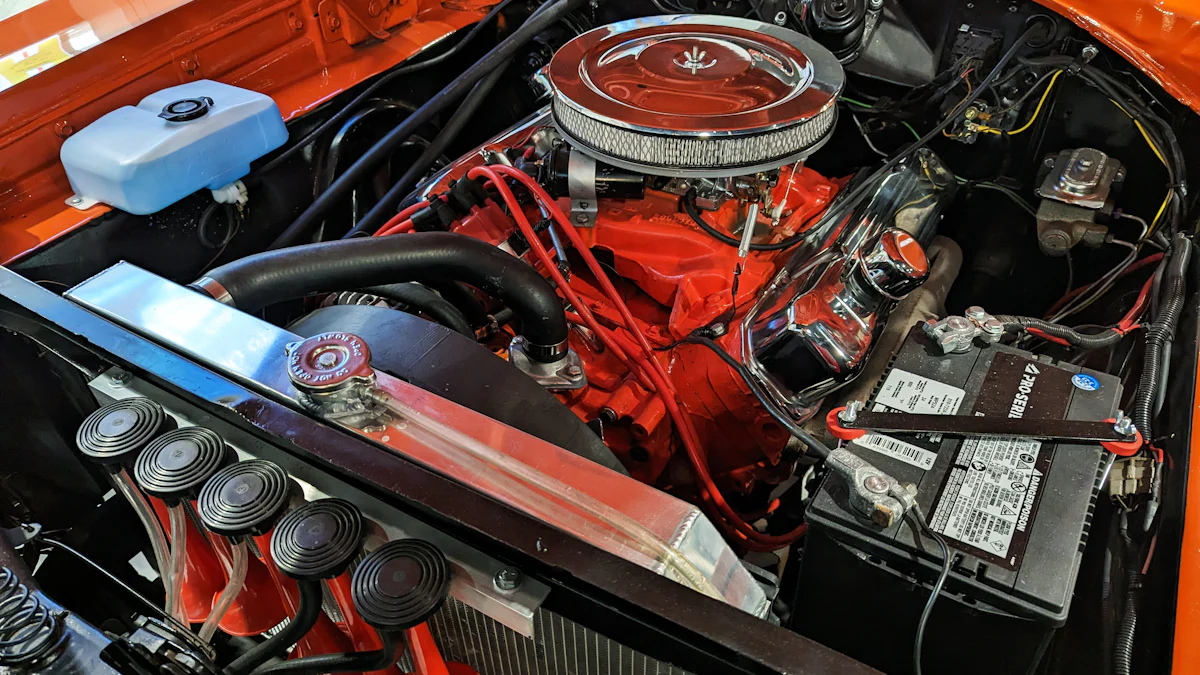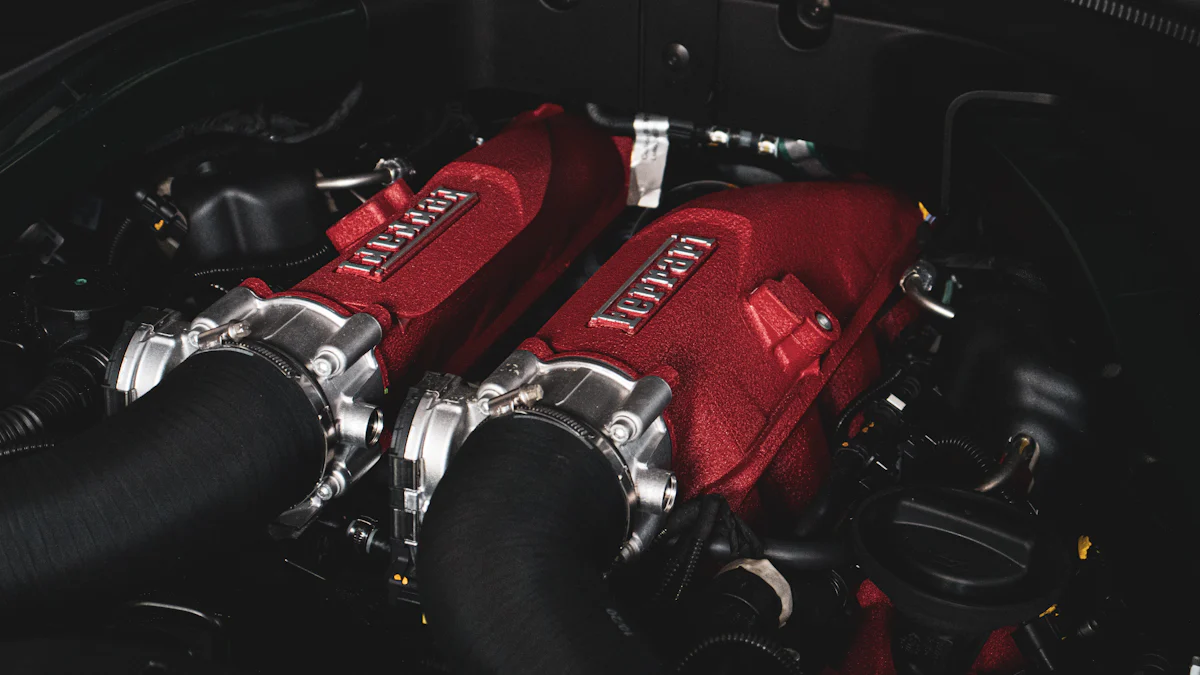
Intake manifold modifications play a crucial role in enhancing the performance of a Corvette. Unleashing the full potential of this iconic vehicle requires meticulous attention to detail, especially when it comes to the engine intake manifold. By exploring the intricacies of these enhancements, enthusiasts can elevate their driving experience to new heights. This guide delves into the nuances of Corvette intake manifold modifications, offering valuable insights and expert advice on maximizing engine efficiency and power output.
Understanding the Corvette Intake Manifold

When delving into the realm of Corvette performance enhancements, understanding the intricacies of the intake manifold is paramount. This crucial component serves as a gateway for airflow into the engine, playing a pivotal role in optimizing power output and efficiency. Let’s explore the fundamental aspects of Intake Manifolds and delve into the specifics of the Stock Corvette Intake Manifold to grasp their significance in enhancing overall performance.
What is an Intake Manifold?
Basic Function and Importance
The Intake Manifold acts as a conduit, delivering air to the engine cylinders for combustion. Its primary function involves distributing this air evenly to each cylinder, ensuring optimal fuel combustion and power generation. By regulating airflow, it influences engine performance significantly.
Types of Intake Manifolds
Intake manifolds come in various designs tailored to specific engine configurations and performance goals. From single-plane manifolds designed for high-RPM power to dual-plane manifolds emphasizing low-end torque, each type caters to distinct driving preferences and engine setups.
Stock Corvette Intake Manifold
Features and Specifications
The Stock Corvette Intake Manifold embodies the factory-standard design installed in these iconic vehicles. Crafted to meet general performance requirements, it often prioritizes durability and reliability over maximizing power output. Understanding its features provides a baseline for evaluating potential upgrades.
Performance Limitations
Despite its solid construction, the stock intake manifold may present limitations when aiming for peak performance levels. Factors such as airflow restrictions or design constraints can hinder overall engine efficiency, making modifications a compelling option for enthusiasts seeking enhanced driving experiences.
Benefits of Intake Manifold Modifications
Increased Horsepower and Torque
Enhancing the intake manifold of your Corvette can result in a substantial boost in horsepower and torque. By optimizing airflow dynamics through modifications, you can unlock the true potential of your engine. This improvement translates into tangible gains in performance, providing a thrilling driving experience that pushes the boundaries of power and speed.
How Modifications Improve Airflow
Upgrading the intake manifold allows for smoother and more efficient airflow into the engine cylinders. By reducing restrictions and enhancing air delivery, modifications optimize the combustion process, resulting in increased power output. This streamlined airflow ensures that each cylinder receives an adequate supply of air, maximizing fuel combustion efficiency.
Real-world Performance Gains
Realizing the benefits of intake manifold modifications extends beyond theory to practical application. Studies have shown that upgrading the intake manifold can lead to a significant increase in rear-wheel horsepower, with some models experiencing up to a 25 HP boost. When combined with other performance enhancements like exhaust upgrades, these modifications synergize to deliver an exhilarating driving experience.
Enhanced Throttle Response
An often overlooked yet crucial aspect of intake manifold modifications is the impact on throttle response. By fine-tuning airflow dynamics, these enhancements result in a more responsive throttle, allowing for precise control over acceleration and deceleration. The immediate feedback from throttle inputs enhances the overall driving experience, making every maneuver feel more dynamic and engaging.
Impact on Driving Experience
The modification of the intake manifold not only improves raw power but also transforms how you interact with your Corvette on the road. The enhanced throttle response provides a seamless connection between driver input and vehicle output, creating a harmonious driving experience that is both exhilarating and satisfying.
Technical Explanation
From a technical standpoint, intake manifold modifications optimize the air-to-fuel ratio within the engine cylinders, ensuring efficient combustion. By fine-tuning this critical aspect of engine performance, enthusiasts can achieve a balance between power output and fuel consumption. This technical precision results in an engine that operates at peak efficiency across various driving conditions.
Improved Fuel Efficiency
Contrary to common misconceptions, intake manifold modifications can actually lead to improved fuel efficiency alongside increased performance gains. By enhancing airflow dynamics within the engine, these modifications promote more complete combustion of fuel, maximizing energy extraction from each drop of gasoline.
Relationship Between Airflow and Fuel Consumption
The intricate relationship between airflow dynamics and fuel consumption plays a pivotal role in determining overall efficiency. Upgraded intake manifolds ensure that air reaches the combustion chambers effectively, allowing for optimal fuel utilization during each ignition cycle. This synergy between airflow management and fuel delivery results in improved mileage without compromising on performance.
Long-term Benefits
Investing in intake manifold modifications not only boosts immediate performance but also offers long-term benefits for your Corvette’s engine health. The optimized airflow provided by these enhancements reduces strain on internal components, prolonging their lifespan and ensuring sustained reliability over time.
Types of Intake Manifold Modifications

Porting and Polishing
What is Porting and Polishing?
Porting and polishing involve reshaping and smoothing the interior surfaces of the intake manifold to optimize airflow. This meticulous process aims to eliminate any irregularities that could disrupt the air’s path into the engine cylinders, ensuring a more efficient combustion process.
Benefits and Drawbacks
- Benefits:
- Enhanced Airflow: By removing obstructions within the intake manifold, porting and polishing facilitate smoother airflow, allowing for improved engine performance.
- Increased Horsepower: The streamlined airflow achieved through this modification can lead to a noticeable increase in horsepower output, enhancing overall vehicle dynamics.
- Drawbacks:
- Precision Required: Achieving optimal results with porting and polishing demands precision and expertise to avoid overdoing it, which could negatively impact performance.
- Cost Considerations: While effective, this modification can be labor-intensive, potentially increasing overall costs depending on the extent of work required.
Aftermarket Intake Manifolds
Popular Brands and Models
When considering aftermarket intake manifolds for your Corvette, several reputable brands offer high-quality options tailored to different performance needs. Brands like Werkwell, F.A.S.T., and Performance Design Carbon provide a range of models designed to enhance engine efficiency and power output.
Installation Considerations
- Compatibility: Ensure that the chosen aftermarket intake manifold is compatible with your Corvette model year and engine specifications to guarantee a seamless installation process.
- Tuning Requirements: Upgrading to an aftermarket intake manifold may necessitate recalibrating your vehicle’s engine management system to optimize performance gains effectively.
Custom Fabrication
When to Consider Custom Solutions
Custom fabrication becomes necessary when off-the-shelf solutions do not meet specific performance goals or requirements. If you seek highly personalized modifications tailored to your Corvette’s unique setup or swap vehicles, custom fabrication offers a bespoke solution.
Cost and Complexity
- Cost Factors: Custom fabrication typically involves higher costs due to the specialized nature of the work involved, including design consultations, material selection, and labor expenses.
- Complexity Considerations: The intricacy of custom fabrication projects requires advanced engineering knowledge and skills to ensure precise execution without compromising on quality or safety standards.
Step-by-Step Guide to Modifying Your Intake Manifold
Preparation and Tools Needed
Essential Tools and Equipment
- Gather the necessary tools for the modification process, including wrenches, sockets, screwdrivers, and a torque wrench.
- Ensure you have safety equipment such as gloves, goggles, and a mask to protect yourself during the procedure.
- Prepare cleaning supplies like degreaser and rags to maintain cleanliness throughout the modification.
Safety Precautions
- Prioritize safety by disconnecting the battery before starting any work on the intake manifold.
- Take precautions to avoid accidental spills or leaks of fluids that could pose hazards during the modification.
- Work in a well-ventilated area to prevent exposure to harmful fumes or chemicals released during the process.
Removing the Stock Intake Manifold
Step-by-Step Instructions
- Begin by disconnecting any electrical connectors attached to the intake manifold carefully.
- Loosen and remove all bolts securing the manifold in place using appropriate tools.
- Gently lift off the stock intake manifold, ensuring no components are left behind or damaged in the process.
Common Challenges and Solutions
- Challenge: Stubborn bolts or fasteners may impede smooth removal of the stock intake manifold.
- Solution: Apply penetrating oil to loosen tight bolts gradually without causing damage.
- Challenge: Limited access to certain areas of the engine bay may make removal challenging.
- Solution: Use extension bars or swivel sockets to reach confined spaces effectively during disassembly.
Installing the Modified or New Intake Manifold
Detailed Installation Steps
- Clean the engine block surface thoroughly before placing the modified or new intake manifold for installation.
- Align gaskets properly to ensure a secure seal between the manifold and engine block.
- Carefully position and bolt down the modified intake manifold following torque specifications for each fastener.
Tips for Ensuring Optimal Performance
- Bolt Kits: Invest in high-quality bolt kits specifically designed for intake manifolds to guarantee proper fastening and sealing.
- Electrical: Double-check all electrical connections post-installation to prevent any issues with sensors or actuators.
- Guide: Refer to your Corvette’s service manual for detailed instructions on torque settings and sequence during installation.
Tuning and Testing
Importance of Proper Tuning
Proper tuning is essential to maximize the gains from intake manifold modifications. It involves adjusting various engine parameters to optimize performance and ensure efficient combustion. By fine-tuning the air-to-fuel ratio and ignition timing, enthusiasts can unleash the full potential of their Corvette’s engine.
How to Tune for Maximum Gains
- Data Analysis: Begin by collecting data on your Corvette’s current performance metrics, including horsepower, torque, and fuel efficiency.
- Parameter Adjustment: Use specialized tuning software to adjust settings such as fuel delivery, spark timing, and airflow rates based on the intake manifold modifications.
- Dyno Testing: Perform multiple dyno runs to assess the impact of tuning adjustments on engine output and overall performance.
- Iterative Process: Fine-tune the parameters iteratively, analyzing each adjustment’s effect on power delivery and throttle response until optimal performance is achieved.
Tools and Software Needed
- Tuning Software: Invest in reputable tuning software like HP Tuners or EFI Live to access and modify your Corvette’s engine control unit (ECU).
- OBD-II Scanner: Utilize an OBD-II scanner to read real-time data from your vehicle’s sensors, enabling precise adjustments during tuning sessions.
- Wideband O2 Sensor: Install a wideband oxygen sensor to monitor air-to-fuel ratios accurately and make informed tuning decisions for optimal combustion.
Testing and Validation
After tuning your Corvette for peak performance, thorough testing and validation are crucial steps to ensure that the modifications have delivered the desired results. Both dyno testing and real-world driving evaluations play a significant role in validating the effectiveness of intake manifold enhancements.
Dyno Testing
- Baseline Run: Conduct a baseline dyno run before any modifications to establish initial horsepower and torque figures for comparison.
- Post-Modification Dyno Run: Perform a series of dyno tests after intake manifold modifications to quantify improvements in power output and torque gains.
- Data Analysis: Analyze dyno data carefully, focusing on peak horsepower increases and torque curves across different RPM ranges post-modifications.
Real-world Driving Tests
- Acceleration Runs: Conduct acceleration tests from various speeds to evaluate throttle response improvements resulting from intake manifold enhancements.
- Highway Performance Evaluation: Take your Corvette for highway drives at different speeds to assess overall engine responsiveness and fuel efficiency post-modifications.
- Temperature Variability Test: Test your vehicle under varying temperature conditions to gauge how well the tuned engine adapts to environmental changes without compromising performance levels.
- Long-term Monitoring: Continuously monitor your Corvette’s performance over an extended period post-modifications to ensure consistent gains in power output, throttle response, and fuel efficiency.
Recapping the manifold modifications’ advantages reveals a significant boost in horsepower and torque, enhancing your Corvette’s performance. Encouraging further enhancements can lead to an even more exhilarating driving experience. Explore additional resources to delve deeper into optimizing your Corvette’s engine components, wiring, and kits for ultimate performance gains.
Post time: Jun-27-2024



